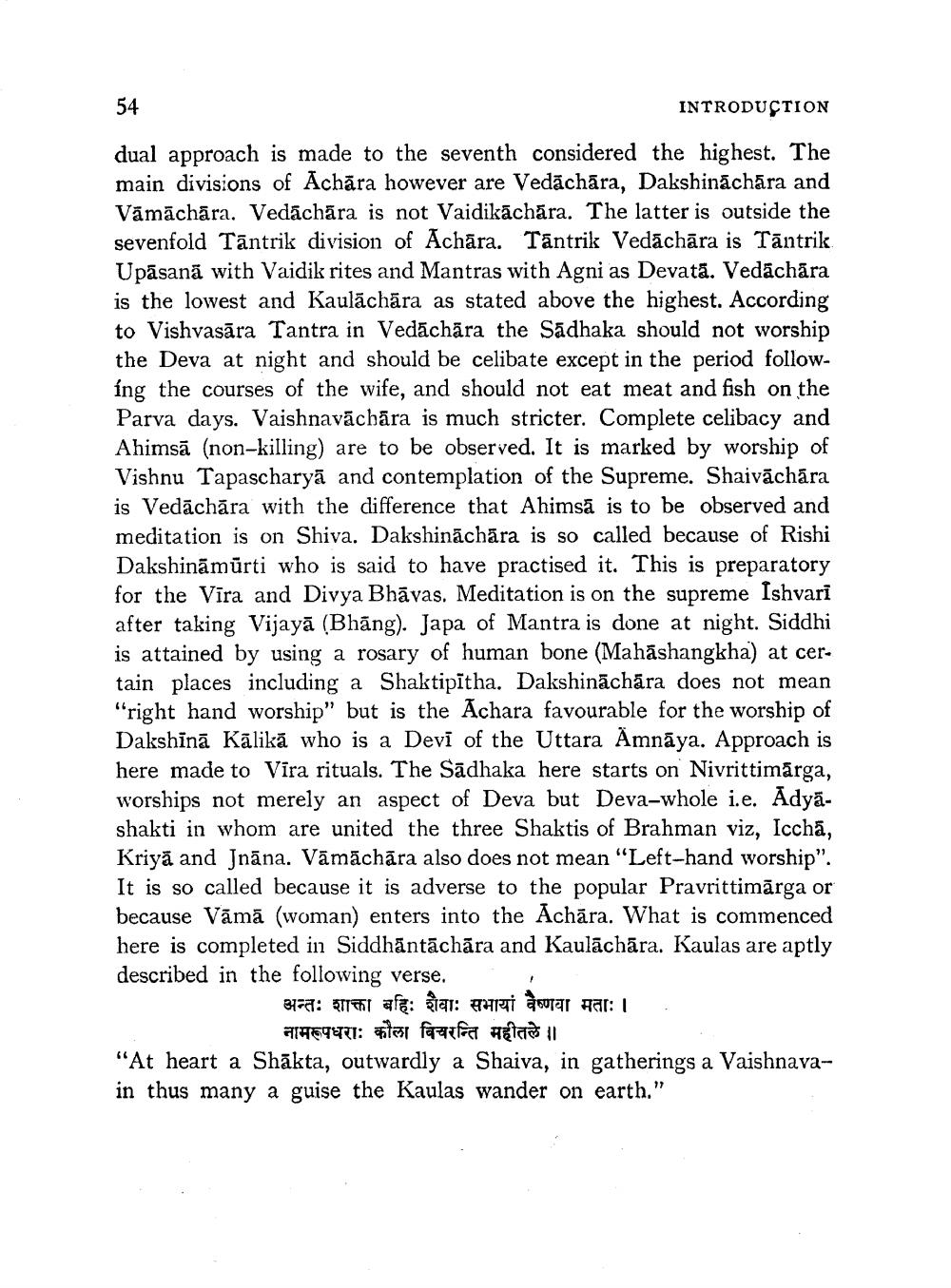________________
54
INTRODUCTION
dual approach is made to the seventh considered the highest. The main divisions of Achāra however are Vedāchāra, Dakshināchara and Vāmāchāra. Vedachāra is not Vaidikāchāra. The latter is outside the sevenfold Tāntrik division of Achāra. Tantrik Vedāchāra is Tāntrik Upāsanā with Vaidik rites and Mantras with Agni as Devatā. Vedächāra is the lowest and Kaulāchāra as stated above the highest. According to Vishvasāra Tantra in Vedáchāra the Sadhaka should not worship the Deva at night and should be celibate except in the period following the courses of the wife, and should not eat meat and fish on the Parva days. Vaishnavāchāra is much stricter. Complete celibacy and Ahimsā (non-killing) are to be observed. It is marked by worship of Vishnu Tapascharyā and contemplation of the Supreme. Shaivāchāra is Vedāchāra with the difference that Ahimsā is to be observed and meditation is on Shiva. Dakshināchāra is so called because of Rishi Dakshināmūrti who is said to have practised it. This is preparatory for the Vira and Divya Bhāvas. Meditation is on the supreme Ishvari after taking Vijayā (Bhāng). Japa of Mantra is done at night. Siddhi is attained by using a rosary of human bone (Mahashangkha) at certain places including a Shaktipītha. Dakshināchāra does not mean "right hand worship" but is the Achara favourable for the worship of Dakshīnā Kālikā who is a Devī of the Uttara Amnāya. Approach is here made to Vīra rituals. The Sādhaka here starts on Nivrittimárga, worships not merely an aspect of Deva but Deva-whole i.e. Adyā. shakti in whom are united the three Shaktis of Brahman viz, Iccha, Kriya and Jnāna. Vāmāchāra also does not mean "Left-hand worship". It is so called because it is adverse to the popular Pravrittimārga or because Vāmā (woman) enters into the Achāra. What is commenced here is completed in Siddhāntāchāra and Kaulāchāra. Kaulas are aptly described in the following verse. ,
अन्तः शाक्ता बहिः शैवाः सभायां वैष्णवा मताः ।
नामरूपधराः कौला विचरन्ति महीतले ।। "At heart a Shākta, outwardly a Shaiva, in gatherings a Vaishnavain thus many a guise the Kaulas wander on earth."




